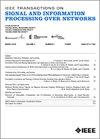不规则多变量时间序列的可解释时空gcnn:架构及其在ICU患者数据中的应用
IF 3
3区 计算机科学
Q2 ENGINEERING, ELECTRICAL & ELECTRONIC
IEEE Transactions on Signal and Information Processing over Networks
Pub Date : 2025-09-24
DOI:10.1109/TSIPN.2025.3613951
引用次数: 0
摘要
在本文中,我们提出了XST-GCNN(可解释时空图卷积神经网络),这是一种用于处理异构和不规则多元时间序列(MTS)数据的创新架构。我们的处理架构通过利用使用时空图的GCNN,在统一的时空管道中捕获时间和特征依赖关系,旨在优化预测性能和可解释性。对于图估计,我们提出了几种技术,包括一种基于(异构)高尔距离的新方法。一旦对图进行估计,我们提出了两种图构建方法:一种基于笛卡尔积的方法,对时间瞬间进行同质处理,另一种是时空方法,在每个时间步长考虑不同的图。最后,我们提出了两种GCNN架构:具有标准化邻接矩阵的标准GCNN和高阶多项式GCNN。除了预测性能之外,我们还通过架构设计选择整合了内在的可解释性,并辅以使用gnexplainer的事后分析,旨在确定驱动模型预测的关键特征时间组合。我们使用来自Fuenlabrada大学医院的真实世界电子健康记录数据来评估XST-GCNN,以预测重症监护病房患者的多药耐药(MDR),这是与高死亡率和复杂治疗相关的关键医疗挑战。我们的架构优于传统模型,实现了平均曲线下的接收器工作特征面积得分$\mathbf{81.03} \pm \mathbf{2.43}$。此外,可解释性分析为驱动耐多药预测的临床因素提供了可操作的见解,提高了模型的透明度和信任度。这项工作为解决异构和不规则MTS的复杂推理任务设定了新的基准,为现实世界的应用提供了一个通用的可解释的解决方案。本文章由计算机程序翻译,如有差异,请以英文原文为准。
Explainable Spatio-Temporal GCNNs for Irregular Multivariate Time Series: Architecture and Application to ICU Patient Data
In this paper, we present XST-GCNN (eXplainable Spatio-Temporal Graph Convolutional Neural Network), an innovative architecture designed for processing heterogeneous and irregular Multivariate Time Series (MTS) data. Our processing architecture captures both temporal and feature dependencies within a unified spatio-temporal pipeline by leveraging a GCNN that uses a spatio-temporal graph and aims at optimizing predictive performance and explainability. For graph estimation, we propose several techniques, including a novel approach based on the (heterogeneous) Gower distance. Once the graphs are estimated, we propose two approaches for graph construction: one based on the Cartesian product that treats temporal instants homogeneously, and a spatio-temporal approach that considers different graphs per time step. Finally, we propose two GCNN architectures: a standard GCNN with a normalized adjacency matrix and a higher-order polynomial GCNN. In addition to predictive performance, we incorporate intrinsic explainability through architectural design choices, complemented by post hoc analysis using GNNExplainer, aimed at identifying key feature-time combinations that drive the model’s predictions. We evaluate XST-GCNN using real-world Electronic Health Record data from the University Hospital of Fuenlabrada to predict Multidrug Resistance (MDR) in Intensive Care Unit patients, a critical healthcare challenge associated with high mortality and complex treatments. Our architecture outperforms traditional models, achieving a mean Receiver Operating Characteristic Area Under the Curve score of $\mathbf{81.03} \pm \mathbf{2.43}$
求助全文
通过发布文献求助,成功后即可免费获取论文全文。
去求助
来源期刊

IEEE Transactions on Signal and Information Processing over Networks
Computer Science-Computer Networks and Communications
CiteScore
5.80
自引率
12.50%
发文量
56
期刊介绍:
The IEEE Transactions on Signal and Information Processing over Networks publishes high-quality papers that extend the classical notions of processing of signals defined over vector spaces (e.g. time and space) to processing of signals and information (data) defined over networks, potentially dynamically varying. In signal processing over networks, the topology of the network may define structural relationships in the data, or may constrain processing of the data. Topics include distributed algorithms for filtering, detection, estimation, adaptation and learning, model selection, data fusion, and diffusion or evolution of information over such networks, and applications of distributed signal processing.
 求助内容:
求助内容: 应助结果提醒方式:
应助结果提醒方式:


